Estimated reading time: 9 minutes
Are you tired of subpar audio quality holding back your music production? In today’s digital age, creating professional-sounding tracks requires more than just talent—it demands the right tools. Enter the audio interface, the unsung hero of modern music production.
But with countless options flooding the market, how do you choose the best sound card for your needs? Whether you’re a bedroom producer or a seasoned studio veteran, navigating the world of audio interfaces can be overwhelming. Fear not! We’re here to guide you through the maze of technical specs and features, helping you find the perfect audio companion to elevate your sound.
In this comprehensive guide, we’ll explore the top audio interfaces available, demystify the technology behind these essential devices, and provide you with a bulletproof buying strategy. From understanding the basics to making an informed decision, we’ve got you covered. So, let’s dive in and discover how to take your music production to the next level!
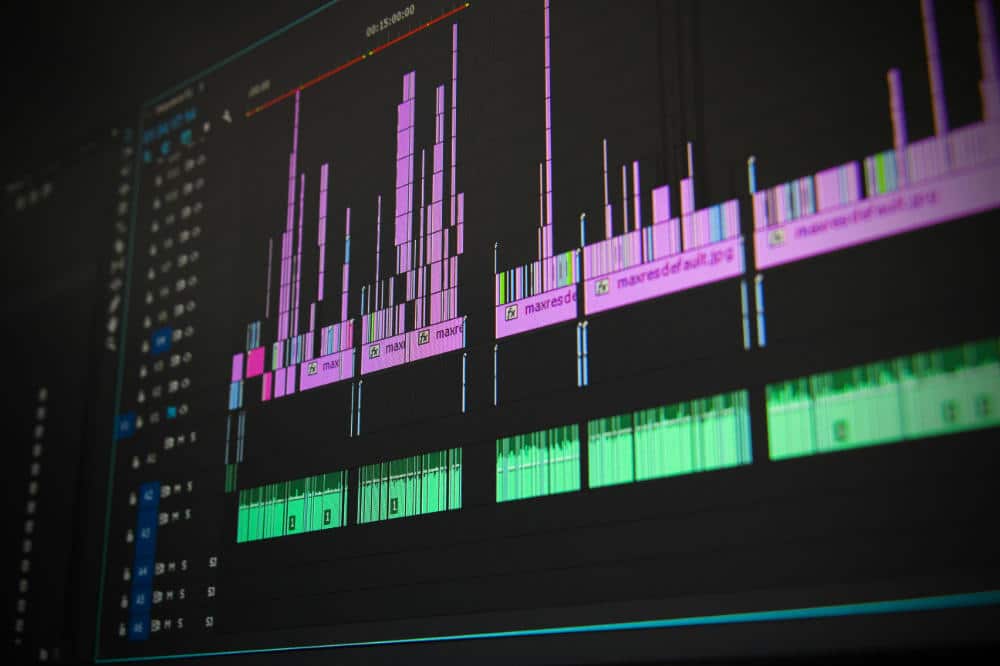
Table of contents
What Are The Best Audio Interfaces?
When it comes to music production, choosing the right audio interface is crucial. Here’s a comprehensive list of the top 15 audio interfaces, each offering unique features to suit various needs and budgets.
Top Audio Interfaces for Music Production
- Mackie Onyx Artist 1.2: Perfect for beginners, offering great value.
- Presonus AudioBox USB 96: Reliable and affordable, ideal for home studios.
- Audient iD4 MKII: Compact with high-quality preamps.
- Universal Audio Volt 2: Vintage-inspired sound with modern features.
- Focusrite Scarlett 2i2 4th Gen: Industry standard, now with improved features.
| Interface | Key Feature | Best For |
|---|---|---|
| Mackie Onyx Artist 1.2 | Great value | Beginners |
| Presonus AudioBox USB 96 | Reliability | Home studios |
| Audient iD4 MKII | High-quality preamps | Compact setups |
| Universal Audio Volt 2 | Vintage-inspired sound | Retro enthusiasts |
| Focusrite Scarlett 2i2 4th Gen | Industry standard | All-round use |
More Advanced Options
- IK Multimedia AXE I/O Solo: Specialized for guitarists.
- MOTU M4: Professional-grade at a mid-range price.
- Solid State Logic SSL 2+: Bringing SSL quality to home studios.
- Focusrite Scarlett 4i4 4th Gen: More I/O for growing setups.
- Universal Audio Volt 476P: With built-in compression.
For those seeking top-tier performance:
- Focusrite Clarett+ 4Pre: Exceptional clarity and low latency.
- Black Lion Audio Revolution 6×6: Boutique quality.
- RME Babyface Pro FS: Ultra-low latency and stability.
- Arturia Audiofuse Studio: Versatile with extensive I/O options.
- Universal Audio Twin X DUO USB HE: Professional-grade DSP processing.
Now that we’ve explored the best audio interfaces, let’s dive into what exactly an audio interface is and why it’s essential for music production.
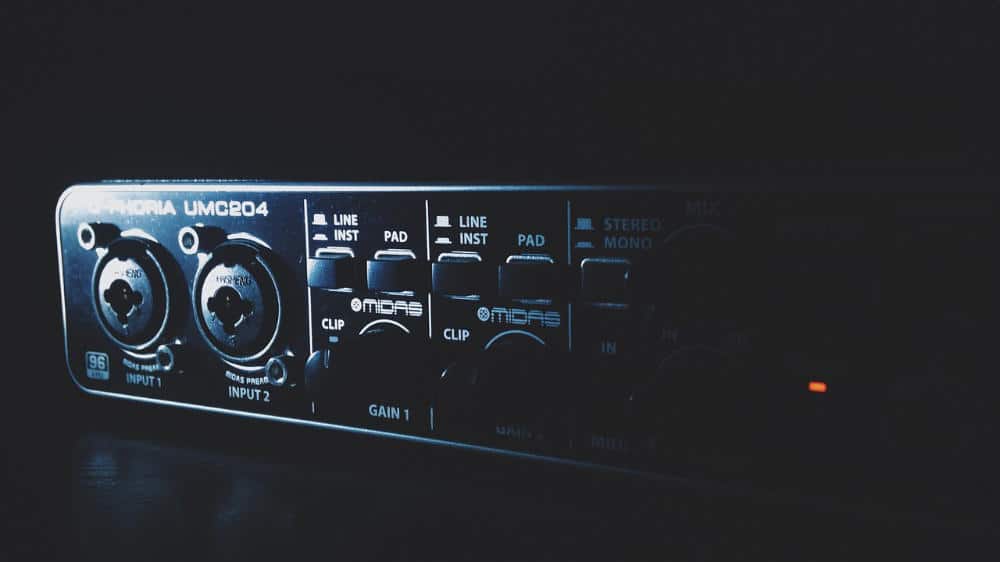
What Is An Audio Interface?
An audio interface is a crucial piece of music production equipment that serves as a bridge between your instruments, microphones, and computer. It converts analog audio signals into digital data that your computer can process, and vice versa. Unlike traditional sound cards, audio interfaces are designed specifically for music production, offering higher quality audio conversion and lower latency.
Key Components of an Audio Interface:
- Preamps: Amplify weak signals from microphones and instruments
- A/D and D/A converters: Transform analog signals to digital and back
- Input/Output ports: Connect various audio sources and output devices
- Drivers: Software that allows communication with your computer
Types of Audio Interfaces:
| Type | Connectivity | Typical Use Case |
|---|---|---|
| USB | Universal, plug-and-play | Home studios, beginners |
| Thunderbolt | High-speed, low latency | Professional studios |
| FireWire | Legacy, still used | Mid-range setups |
| PCIe | Internal, highest performance | High-end studio installations |
Audio interfaces are essential for:
- Recording high-quality audio
- Monitoring with near-zero latency
- Connecting multiple instruments and microphones
- Improving overall sound quality in music production
Understanding the role of an audio interface is crucial when setting up a home studio or professional recording environment. With this foundation, we can now explore the factors to consider when choosing the right audio interface for your needs.
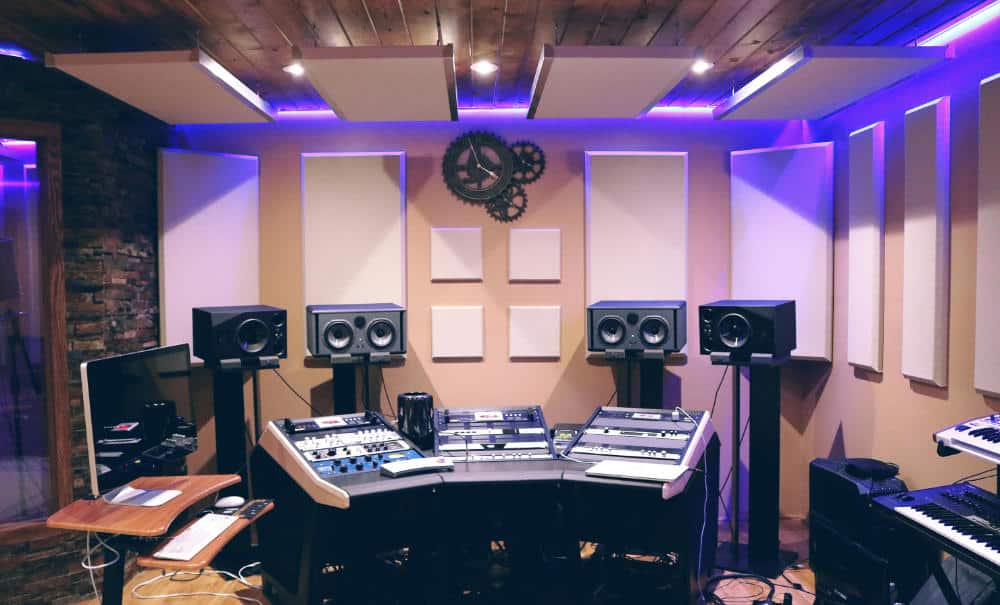
Audio Interface Buying Guide
When searching for the perfect audio interface for your music production needs, consider the following key factors:
Connectivity and Compatibility
- USB vs. Thunderbolt vs. FireWire: Choose based on your computer’s ports and speed requirements.
- Driver Support: Ensure compatibility with your operating system and Digital Audio Workstation (DAW).
Input/Output Configuration
| Feature | Description | Importance |
|---|---|---|
| Mic Preamps | Quality and number of microphone inputs | Essential for recording multiple instruments |
| Line Inputs | For connecting synthesizers and other gear | Important for electronic music producers |
| MIDI I/O | For connecting MIDI keyboards and controllers | Crucial for producers using virtual instruments |
| Headphone Outputs | Number and quality of headphone jacks | Vital for monitoring during recording sessions |
Audio Quality
- Bit Depth and Sample Rate: Look for at least 24-bit/96kHz for professional-grade recordings.
- Dynamic Range: Higher dynamic range allows for better capture of quiet and loud sounds.
Additional Features
- Direct Monitoring: Allows zero-latency monitoring of input signals
- Phantom Power: Necessary for condenser microphones
- Onboard DSP: Useful for real-time effects processing
- Expandability: Consider interfaces with ADAT or S/PDIF for future expansion
Budget Considerations
Balance your needs with your budget. Entry-level USB interfaces can be great for beginners, while professional studios may require more advanced Thunderbolt interfaces with multiple I/O options.
Now that we’ve covered the key aspects of choosing an audio interface, let’s move on to some final thoughts on finding your perfect match.
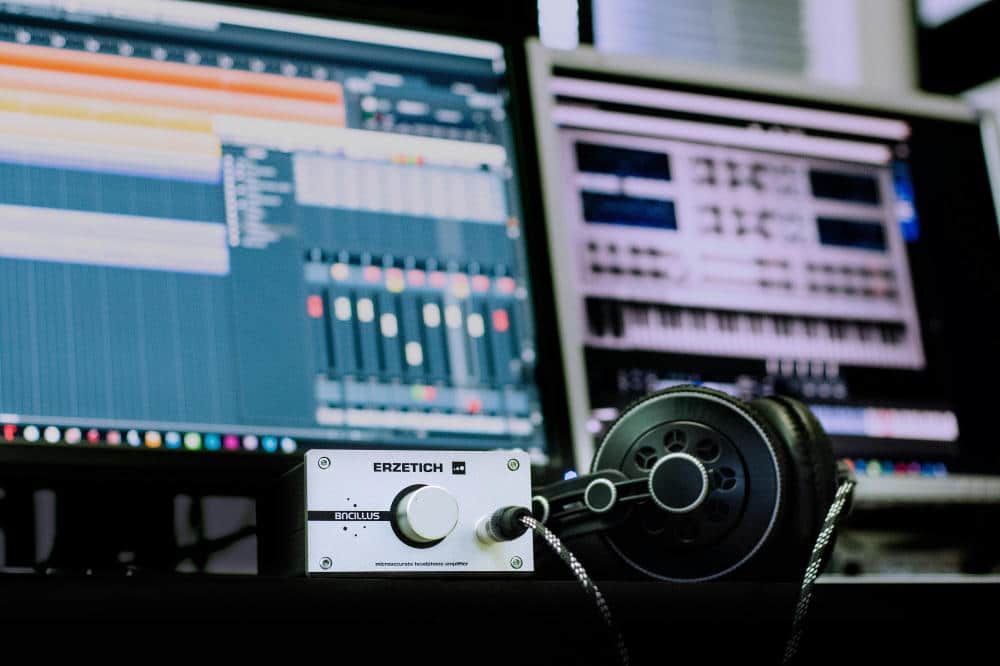
Finding Your Perfect Audio Interface: Key Takeaways
Now that we’ve explored the ins and outs of audio interfaces, let’s summarize the key points to help you make an informed decision for your music production setup.
Our Top Picks For The Best Audio Interfaces
After careful consideration and extensive testing, we’ve compiled a list of our top recommendations for audio interfaces across various categories:
| Category | Best Audio Interface | Key Features |
|---|---|---|
| Overall Best | Universal Audio Apollo Twin X | Unparalleled sound quality, DSP processing |
| Best for Beginners | Focusrite Scarlett 2i2 | User-friendly, excellent preamps, USB-powered |
| Best Budget Option | Behringer U-Phoria UMC202HD | Affordable, decent sound quality, durable build |
| Best for Pro Studios | RME Fireface UFX+ | Extensive I/O options, low latency, rock-solid drivers |
| Best Portable | Apogee Duet 3 | Compact design, pristine audio quality, iOS compatibility |
When selecting your perfect audio interface, consider the following key takeaways:
- Assess your I/O needs based on your recording setup
- Determine your budget and choose accordingly
- Consider the interface’s compatibility with your computer and DAW
- Look for low-latency performance, especially for real-time monitoring
- Evaluate the quality of preamps and converters
- Check for additional features like DSP processing or bundled software
Remember, the best audio interface for you depends on your specific needs, budget, and production goals. By keeping these factors in mind and referring to our top picks, you’ll be well-equipped to choose an audio interface that elevates your music production to new heights.
Video: BEST Budget Audio Interface W/ Bundles for Music Production in 2024
Conclusion
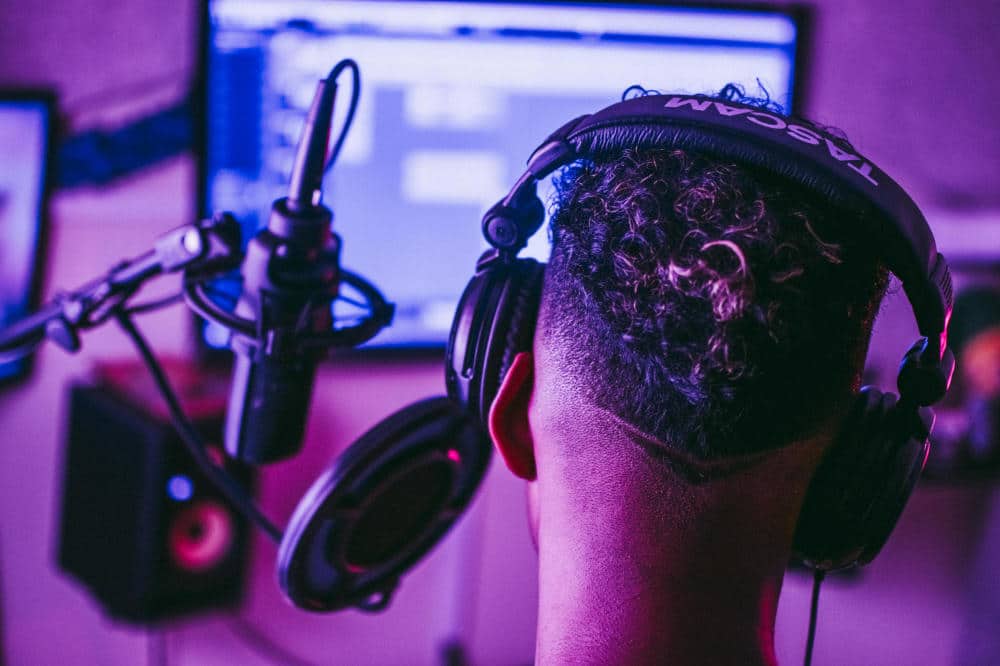
Audio interfaces are essential tools for music producers, offering high-quality sound conversion and connectivity options. This post has explored the top audio interfaces on the market, explained their function, and provided a comprehensive buying guide to help you make an informed decision.
When choosing your audio interface, consider factors such as connectivity, I/O options, sample rates, and budget. Remember that the best audio interface for you depends on your specific needs and production setup. By carefully evaluating these aspects, you can find the perfect audio interface to elevate your music production to new heights.
Related Posts
FAQs
An audio interface connects your instruments, microphones, and computer, converting analog signals to digital for recording. It provides better audio quality, low latency, and multiple input/output options, making it a crucial tool for producing professional-quality music.
Key factors include connectivity (USB, Thunderbolt), number of inputs/outputs, preamp quality, sample rate, bit depth, and overall durability. These features determine how well the interface fits your studio setup and production needs.
Yes, budget-friendly interfaces like the Focusrite Scarlett 2i2 and PreSonus AudioBox USB 96 offer solid performance for beginners. While they may lack advanced features, they provide good sound quality and essential functionality for home studio setups.
USB interfaces are more common and cost-effective, suitable for home studios. Thunderbolt interfaces, however, offer faster data transfer rates, lower latency, and are preferred in professional setups for high-demand tasks.
For vocals, choose an interface with high-quality preamps, phantom power for condenser mics, and a low noise floor. These features ensure clean, detailed vocal recordings with minimal background interference.
When selecting an audio interface for music production, consider these key features:
– Sample rate and bit depth
– Number of inputs and outputs
– Preamp quality
– Latency performance
– Connectivity options (USB, Thunderbolt, etc.)
– Build quality and durability
| Feature | Importance |
|---|---|
| Sample rate | High |
| Preamp quality | Critical |
| Latency | Very important |
| Connectivity | Depends on setup |
Professional-grade audio interfaces typically offer:
– Higher quality components
– Better signal-to-noise ratio
– More inputs/outputs
– Lower latency
– Advanced features (e.g., word clock, ADAT)
Budget options may suffice for beginners but often lack the precision and expandability needed for professional work.
For vocal recording, prioritize:
– High-quality preamps
– Phantom power for condenser mics
– Low noise floor
– Headphone output for monitoring
– Compatible software/drivers
Top brands include:
– Universal Audio
– Focusrite
– Apogee
– RME
– PreSonus
These manufacturers are known for their innovation and reliability in the audio interface market.
High-end interfaces offer:
– Superior sound quality
– More robust build
– Future-proofing for studio growth
– Advanced features for complex setups
– Better resale value
While pricier, they can be a wise investment for serious producers and professional studios.
For beginners, consider:
– Focusrite Scarlett 2i2
– PreSonus AudioBox USB 96
– Native Instruments Komplete Audio 2
– Behringer U-Phoria UMC22
These offer a good balance of quality and affordability, making them ideal starting points for home studio setups.
